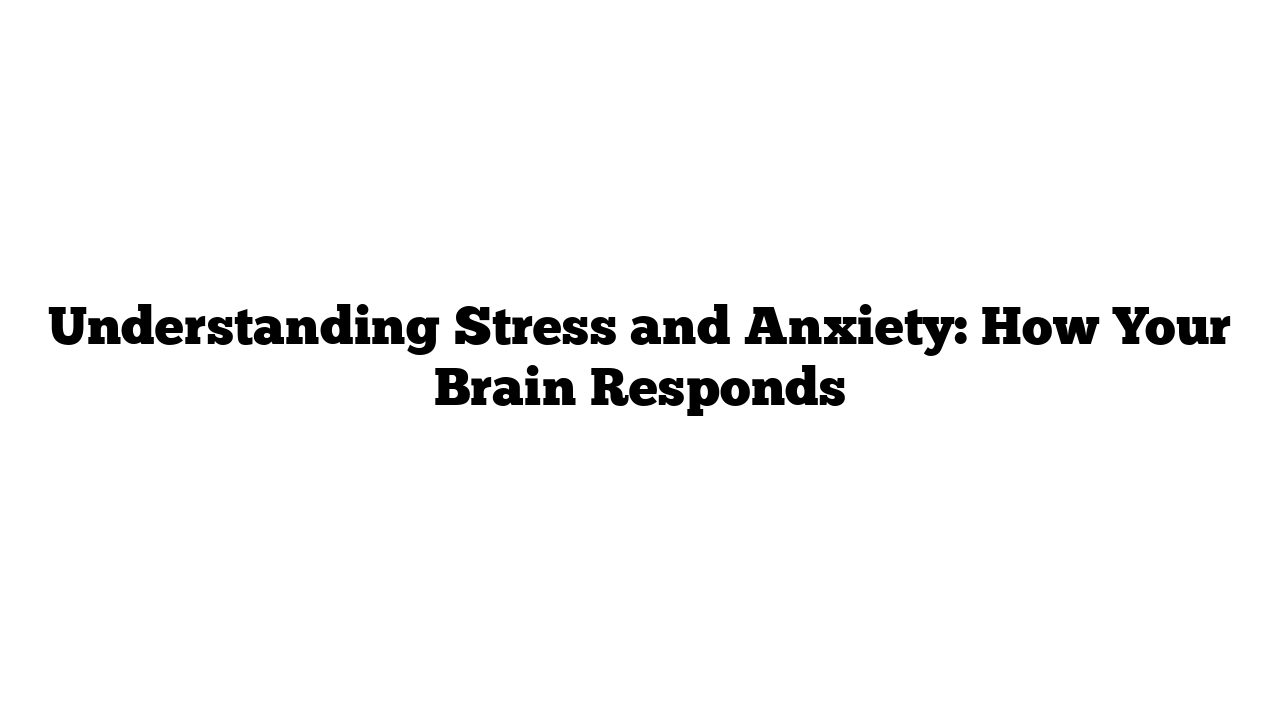Our brains are amazing at helping us stay safe from danger. But sometimes, the brain can’t tell the difference between real danger and stress. That’s why when you’re really stressed, your brain responds as if you’re in danger.
Fight, Flight, Freeze, and Fawn Response
When your brain feels threatened, it triggers something called the fight, flight, freeze, or fawn response. Imagine a bear is coming after you:
- Fight: You might try to fight the bear.
- Flight: You might run away as fast as you can.
- Freeze: You might hide, hoping the bear doesn’t see you.
- Fawn: You might try to charm the bear into not eating you.
This response is your body’s way of trying to keep you safe.
What Does This Have to Do With Anxiety?
Anxiety happens when your brain reacts to stress in the same way it reacts to danger. Let’s break it down using three important parts of your brain:
- Brain Stem (Survival Brain): This part controls the things that keep you alive, like breathing, heart rate, and sleep.
- Limbic System (Emotional Brain): This part handles your emotions.
- Frontal Lobe (Smart Brain): This part helps with problem-solving, thinking, reading, and communicating.
When you’re stressed, your brain sends extra energy to your survival and emotional brain to help you react quickly. However, this energy has to come from somewhere, so your smart brain goes offline temporarily. This is why it’s hard to think clearly or focus when you’re feeling anxious or overwhelmed.
When Stress Feels Like Danger
Even things that aren’t life-threatening, like homework or a fight with a friend, can trigger your fight, flight, freeze, or fawn response. Here’s how:
- Fight: You might feel angry or irritable.
- Flight: You might panic or want to run away.
- Freeze: You might avoid doing your homework.
- Fawn: You might try to talk your way out of the situation.
Brain Hacks to Calm Down
Luckily, there are some simple brain hacks that can help you calm down when you’re stressed.
1. Calm Your Body (Survival Brain)
When you calm your body, your survival brain relaxes. Try:
- Taking deep breaths
- Going for a walk or run
- Taking a shower
2. Calm Your Thoughts (Emotional Brain)
By calming your thoughts, you relax your emotional brain. You can do this by:
- Practicing visualization (imagining a peaceful place)
- Doing meditation or mindfulness
3. Turn Your Smart Brain Back On
To get your smart brain working again, try:
- Talking to someone, like a friend or counselor
- Reading a book
- Writing down your thoughts
Practice Makes Perfect
Learning to calm down takes practice. Each time you practice, you create new pathways in your brain, making it easier to manage stress in the future. Over time, these techniques can become automatic, helping you feel calmer in stressful situations.
Remember, it’s okay to feel stressed, but with these tools, you can take control and calm your brain. Keep practicing, and soon it’ll feel much easier!
